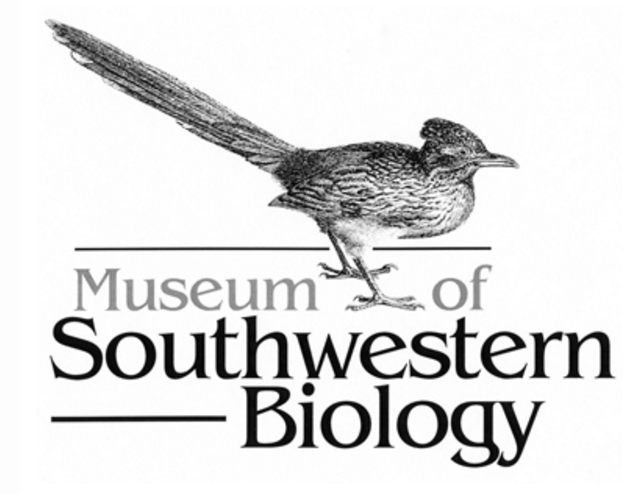Document Type
Article
Publication Date
12-9-1985
Abstract
Large tadpoles of five New Mexican species of leopard frogs, Rana berlandieri, R. blairi, R. chiricahuensis, R. pipiens, and R. yavapaiensis can be distinguished using a suite of lO morphological variables and color patterns. The tadpoles of R. chiricahuensis tend to be the darkest with the boldest pattern. Rana berlandieri and R. yavapaiensis are less dark and less boldly patterned. The patterns of R. pipiens and R. blairi tadpoles are relatively pale and not heavily patterned. Rana berlandieri is a relatively long, slim tadpole with a moderately deep tail and narrow tail muscle; R. blairi has an oval body shape, a deep, long, and wide tail, and a filmy tail fin; R. chiricahuensis is relatively small-bodied with a deep, wide tail and thick tail fin; R. pipiens has a deep, heart-shaped body, a moderately deep, narrow tail, and a filmy tail fin; R. yavapaiensis is similar toR. chiricahuensis in body shape, but has a shallower tail. Other characters including numbers of labial tooth rows, condition of oral papillae, mouth shape, visibility of the lateral line system, iris pattern, peritoneal coloration, and visibility of ventral muscle sheath myomeres are less diagnostic, but proved useful when series of tadpoles were examained. Rana tadpoles are differentiated from other New Mexican anurans and a key to New Mexican larval Rana is provided. Patterns in the dates of occurrence of eggs and tapdole size classes suggest that breeding is most common in the spring; a second peak may occur in the fall, but detailed patterns require verification. Rana chiricahuensis may be reproductively active year-round in some warm springs. According to the habitat descriptions accompanying the collections in New Mexico, tadpoles of R. berlandieri and R. chiricahuensis are found primarily in flowing waters, and R. blairi and R. pipiens are found in both still and flowing waters. Rana yavapaiensis was not included in the habitat and breeding season analysis.
Recommended Citation
Scott, Norman J. Jr and Randy D. Jennings. "The Tadpoles of Five Species of New Mexican Leopard Frogs." (1985). https://digitalrepository.unm.edu/occasionalpapers/12


Comments
OCCASIONAL PAPERS THE MUSEUM OF SOUTHWESTERN BIOLOGY 3